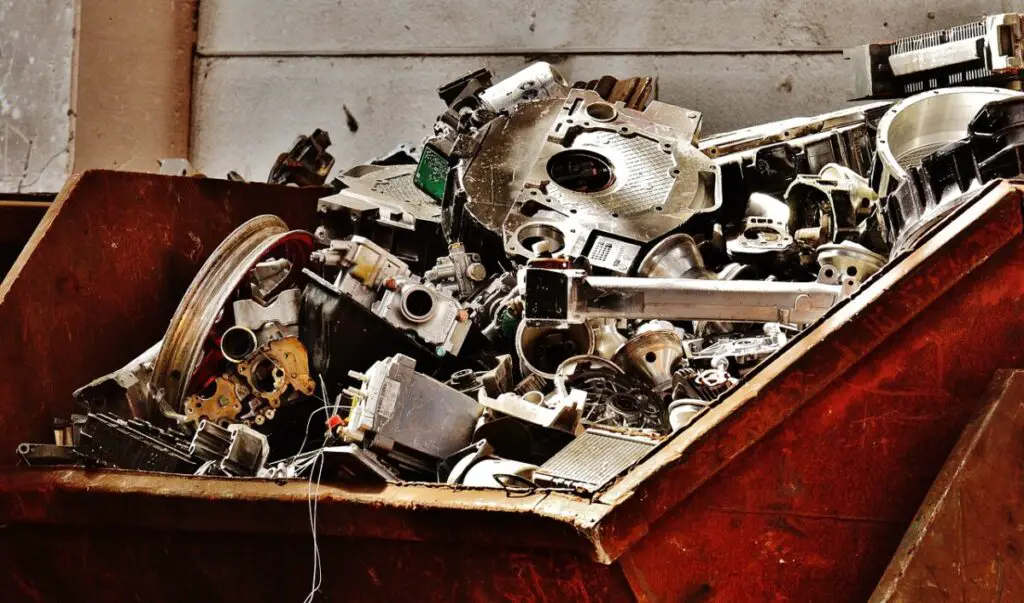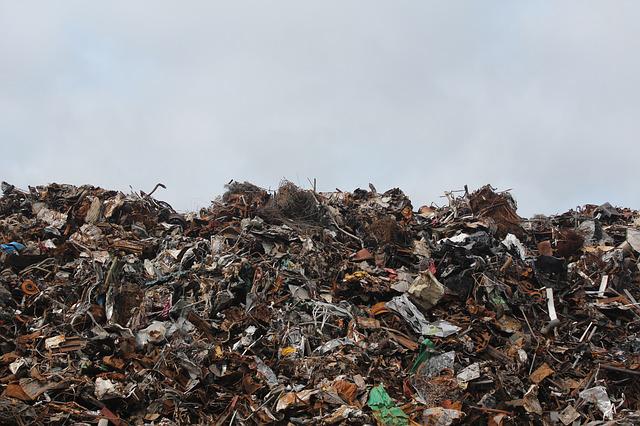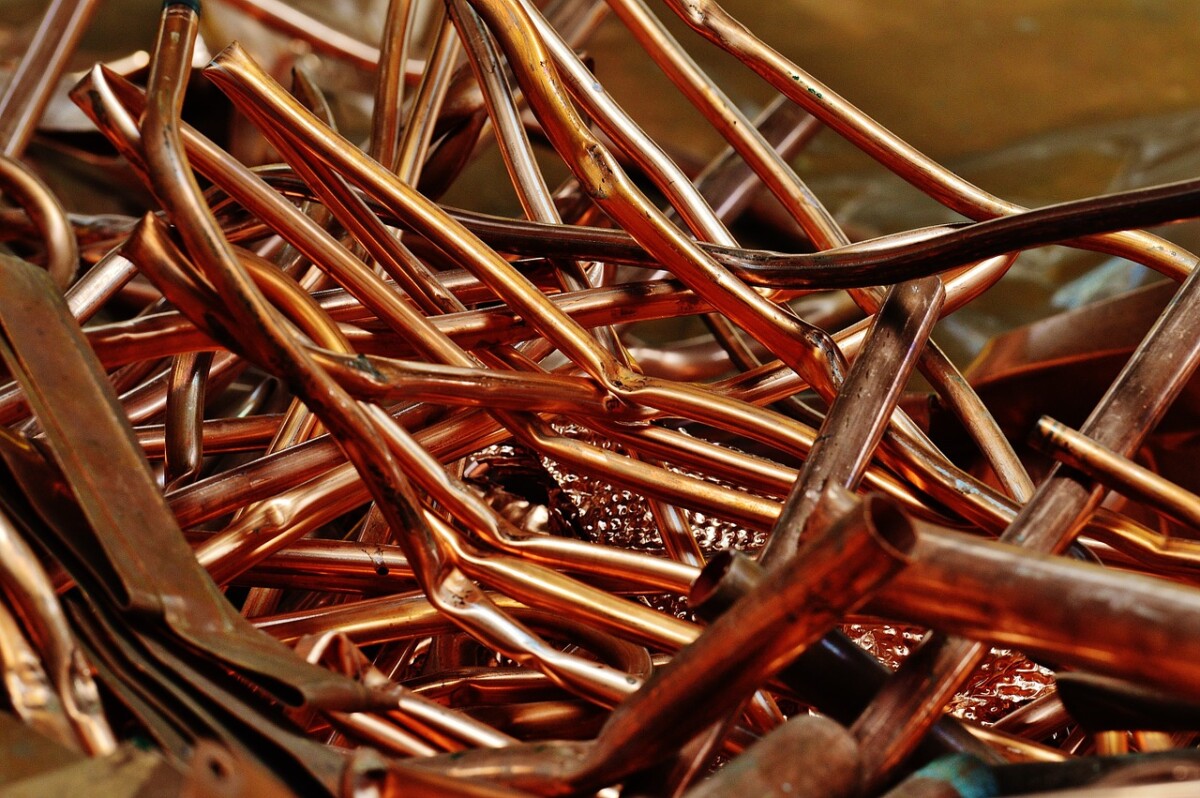
Scrap metal can simply be defined as any product based on waste metal and other material which can be discarded from the product’s previous consumption or manufacturing. Scrap has enormous value, despite the fact that the British metal recycling industry is worth over £1 billion. Scrap metal is primarily used in business and residential buildings. The conversion of these raw materials into secondary materials for smelting brand new metals is crucial to any new metallurgical process.
Benefits of scrap metal recycling
Scrap metal recycling is a good business strategy. Individual consumers and manufacturers are reaping many benefits from their efforts. Companies will reduce their overall raw material needs when recycling various metal scrap, such as scrap steel, copper piping, recycled aluminum, brass fixtures, or door handles made of steel.
These items often have a high market value especially items like window frames, air conditioners, and other end of life products.
Here are some advantages of scrap metal recovery.
It puts cash in your pocket
The primary motivation for recycling metal is monetary. You receive payment for the items brought into the scrap yard. Scrap yards and their prices vary depending on market conditions and other factors, and a fee is applicable. For information about general industry developments, you can use third-party applications and websites that collect the average prices across scrap yards for scrap metal. You should contact a scrap metal yard in the vicinity to know the price at the time of sale.
If you are looking to sort your scrap metal into types then the best way is to divide them into ferrous metal and non ferrous metals. If you are not sure how to do this then it’s quite easy.
Simply get a magnet and hold it to the metals, if the magnet sticks to the metal then it’s ferrous. Ferrous metals like iron (iron ore), steel, and other large metal pieces can be worth a lot as you generally get paid by weight
It saves energy
Recycling old materials is much less wasteful than producing new products from virgin raw materials. Recycling aluminum can help reduce electricity bills. With this low carbon footprint, consumers will be able to purchase cheaper goods and reduce emissions of CO2 which will help reduce pollution – and so the result is an economic win.
Scrap dealers at scrap yards will often be willing to sell recycled materials and especially recyclable metal materials in the form of plumbing pipes, plumbing fixtures, building supplies, and electrical equipment although you may need to be careful with these items if you are looking to repurpose them.
It keeps hazardous waste out of landfills
In landfills, many metals take long periods of time to break down into smaller elements that are able to go into the earth. Lead and mercury can be toxic, and leach into soil and water over time. The removal in the recycling process of these products from landfill is beneficial and reduces waste in many ways.
You will often see large quantities of steel, building materials, steel, iron, structural steel, construction materials as well as other types of the most recycled materials in landfills. These surplus materials are often dumped without adequate sorting and even as a result of excess product manufacturing of consumer goods.
It creates jobs
The industry is the largest economy producing 59,510 jobs across the U.S. and is responsible for nearly $13 billion annually in taxes worldwide, compared with 571,000 for the industry.
Sorting metal scrap and other materials takes a lot of energy in the form of manpower as many of these processes cannot be automated. As a lot of metal recycling needs to be done manually the scrap metal is sorted at a lower rate than if the metals were sorted automatically.
This labor intensive process is currently unable to process steel scrap from the steel industry as the rate of production and waste this produces far exceeds current capacity.
It saves businesses money

Reducing the amount spent on recycling scrap metal helps manufacturers by significantly decreasing the manufacturing costs, as well as saving time for their employees.
It helps to know your metals

The most difficult aspect of recycling scrap metal is identifying the value of the metal before heading out to the scrap yards. Learn basic metals so you don’t get taken advantage of.
It also helps you identify toxic metals, which could damage our natural resources such as rivers and lakes. These toxic metals should be avoided because of potential chemical activity on the surface which could be harmful.
Copper – $$$$$
Copper will be reddish colored in optimum conditions. The rusty swatch will have a darker brown color and may have green spots. Copper is commonly found within homes and offices. Typically this is found as pipes for water and roof piping and air conditioning systems. Electrical cables have copper in the core; beneath black or colored plastic insulation is black copper wire. Copper plumbing pipes can be easily recycled into new products alongside brass fixtures and door handles which often retain their value as antique items. A lot of electrical equipment may also contain copper wiring as well as other precious metals like gold and platinum. Taking this apart will give you some money back for recycling it in your scrapyard.
Aluminum – $
Aluminum paints are commonly unpainted and it has a white whitish silver hue. It bends very easily, without a lot of flex. Aluminum cans are often taken and transported in bulk at scrapyards. Cans are also used in many other metals. You may find it at several locations on any home including sidings, gutters, doors, and more. Although aluminum can cost less to recycle at the scrapyard, it could be reused within months. Aluminum can be recycled up to 80% saving energy and so the metal needs recycling.
Scrap Metal Recycling Process
Making up old bottles or cooking pots into new items is incredibly exciting. This is each stage.
Collecting
If you take your scrap metal to a scrap mill nearest to you, it passes by a weighing station. In certain places, you may have the option to sit in the car while scale operators unload and weigh your material. The weight ticket will then be used. Aside from metal collection, scrap metal can be collected at a curbside recycling facility or at a major dealer or scrap dealer. Curbside recycling and public recycling services generally accept standard metal objects, such as bottles, but don’t provide an entire range of recycled metal collection services. Scrap metal recycling is an important part of the recycling industry.
Sorting
Scrapyards use a variety of methods for sorting and separating scrap metal including visual identification, spectrometers, magnets, and electrical current. Metal groups need to be organized in order for metals that meet certain requirements for quality, and this ensures that they do not get into contact with other metals or substances. Scrappers will be rewarded more money by doing the work earlier and removing parts of their machines from a mixture, such as bicycles made up of rubber wheels.
Melting and refining
The processes for melted scraps will differ if there are different metals or purity needs. Melting metal helps to remove the impurities and make them separate from the rest of the metal. Some metals are refined further via processes as a consequence of electrolysis to produce something as close to its initial form as possible. Alternate materials are found through a mineral slurry or from the ground dubbed virgin material. Scrap metal retains all its properties even if it has not been purified. Scrap recycling is more efficient than a traditional metal recycling solution.
Know the basics
Before taking any of these items to a metal recycling site you need to do some basic things. How much money should be used to buy scrap materials? Separate the scrap metal away from other recycling and then keep it away from other objects like paper and non ferrous metal. A product must contain at least 55% metal, but put aside anything that meets that requirement. Afterward, a magnet could be used for detecting the type of ferrous and non-ferrous objects in a product. It’s not strictly necessary but may make your load easier. Remember if the magnet sticks to the metal it’s ferrous otherwise, it’s a non ferrous metal. Have your identification handy when heading out.
Preparing into forms
To increase the efficiency of melting, metal is cut into a specified size and shape. . Scrap metal can be ordered and the fleet knows what shape, composition, and weight of metals they need. Shredding, torching & baling are the most common way in which scrap metals may be processed depending upon their end use. When metal is processed the waste is taken off the scrapyard and goes onto the next buyer in the chain: mills, foundries, and smelters that use scraps for constructing metal.
Solidifying
Upon clearing the contaminants, molten materials are turned into solids as they solidify. Plants vary depending on which forms they take and their kinds differ greatly from plants. Examples are tassel wires & sheets. Sometimes chemical compounds are mixed into metals to increase their density or change properties. Once the solidification phase is complete, the metal is ready for another use.
Manufacturing
Generally, the foundry or mill is not used with new metal or virgin metal. It also touches other manufacturing segments including aerospace, automotive, robotics, and public projects. In repair and reuse, the lifecycle is extended until they are finally ready for recycling.
Types of recyclable metals

Scraps metal is usually classified into two kinds: ferrous and non-ferrous. Here are some differences between the two:
Non-ferrous metals
Since non-ferrous metals do not lose their chemical properties in their recycling cycle, the metals can be reused continuously. Some of the more commonly used non-ferrous metals include zinc and aluminum. Precious metals such as gold also belong in the nonferrous class. They are used in numerous different ways. Although non ferrous metal scrap represents only 10 percent of all scrap materials recycled by the United States, they represent half the revenue of the scrap recycling industry. The United States exported to more than 95 countries in 2018.
Ferrous metals
The phrase “ferrous” originates mainly from Latin and refers to a variety of metals. Iron has the second most frequent place on the planet’s crust. It has a natural magnetization that creates the magnetic field on the planet. Most metals that are magnetic are usually loaded by heavy electromagnets attached to an excavator and disposed of by the yard to transport and load scrap from trucks or to the yard for recycling. In America, ferrous metals are the most widely traded in durable goods, including furniture and appliances.
Non-recyclable metals
Sadly, not all scrap metals are recyclable but the list is extremely brief. These include toxic materials like mercury, uranium, and plutonium. Some metals are thrown from scrapyards often due to safety concerns. Some other things may require additional processing as it takes more time. It may be wise to visit a nearby yard for information.
Ferrous metals
The phrase “ferrous” originates mainly from Latin and refers to a variety of metals. Iron has the second most frequent place on the planet’s crust. It has a natural magnetization that creates the magnetic field on the planet. Most metals that are magnetic are usually loaded by heavy electromagnets attached to an excavator and disposed of by the yard to transport and load scrap from trucks or to the yard for recycling. In America, ferrous metals are the most widely traded in durable goods, including furniture and appliances.
Non-recyclable metals
Sadly, not all scrap metals are recyclable but the list is extremely brief. These include toxic materials like mercury, uranium, and plutonium. Some metals are thrown from scrapyards often due to safety concerns. Some other things may require additional processing as it takes more time. It may be wise to visit a nearby yard for information.
Looking to make money from crafts?
Click here to learn how with our step-by-step guide showing you everything you need to know.

